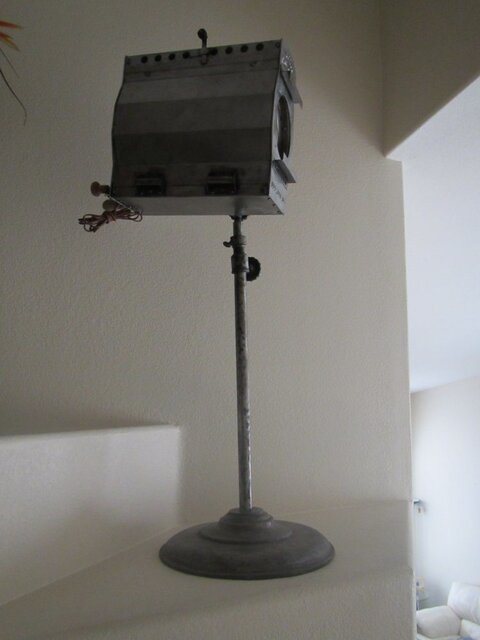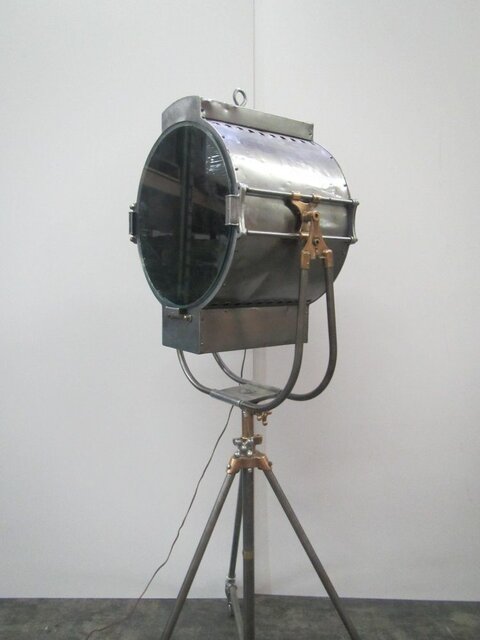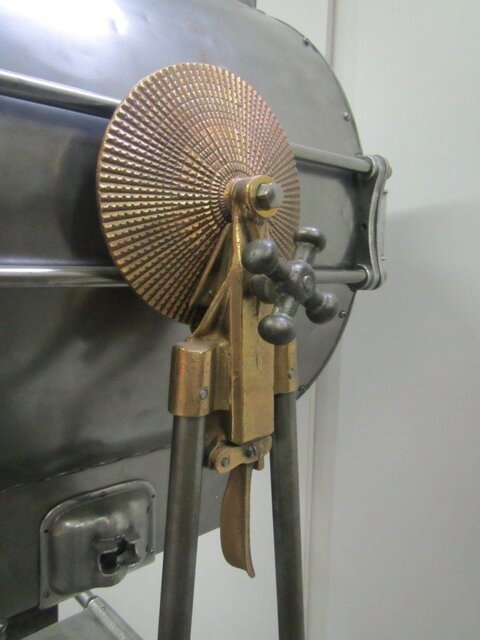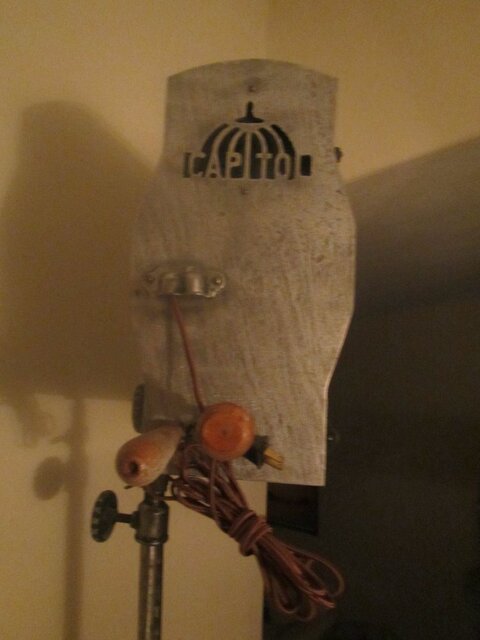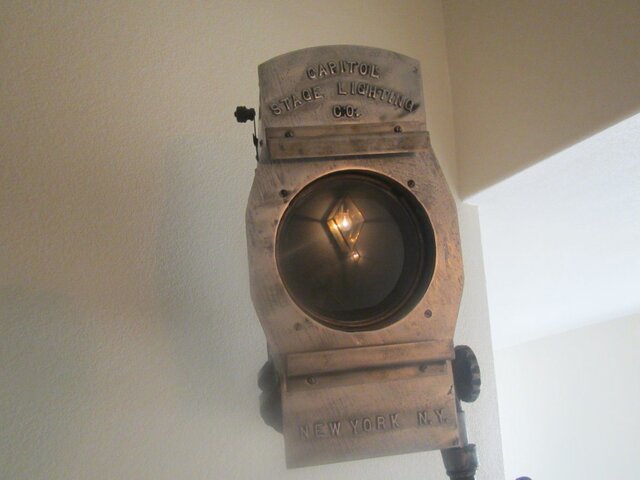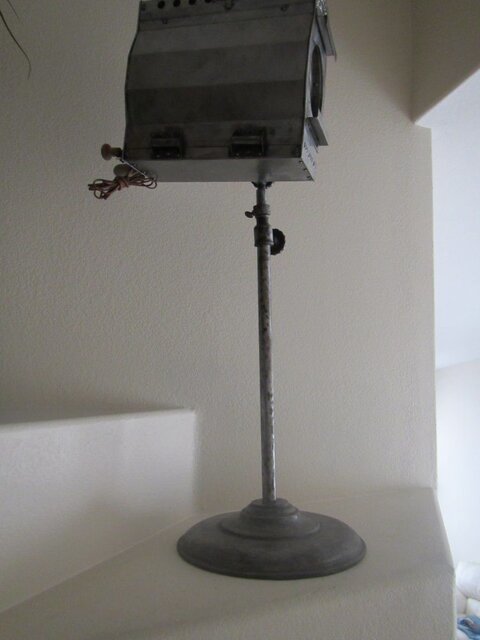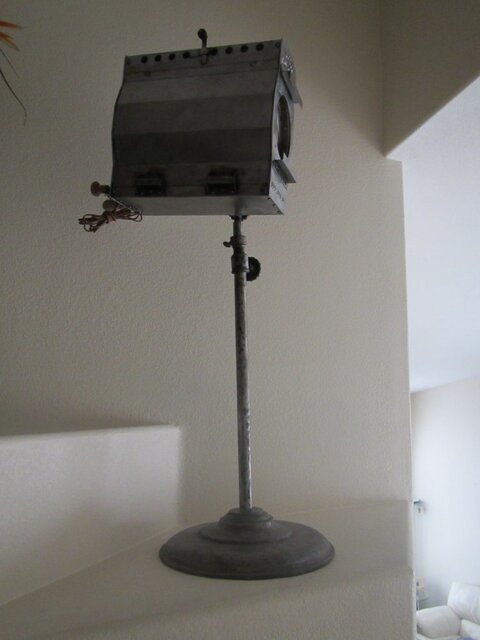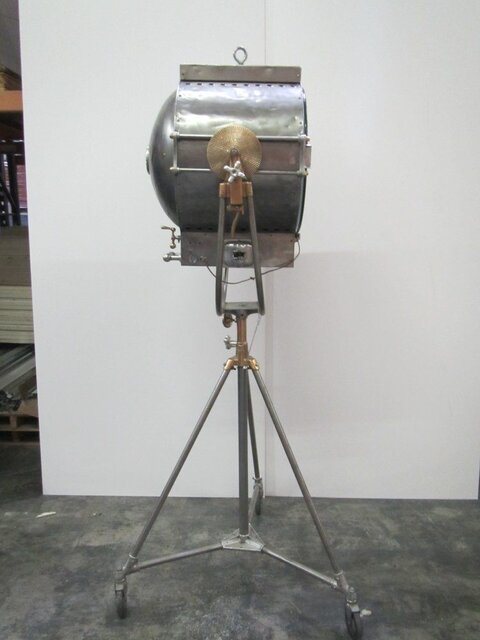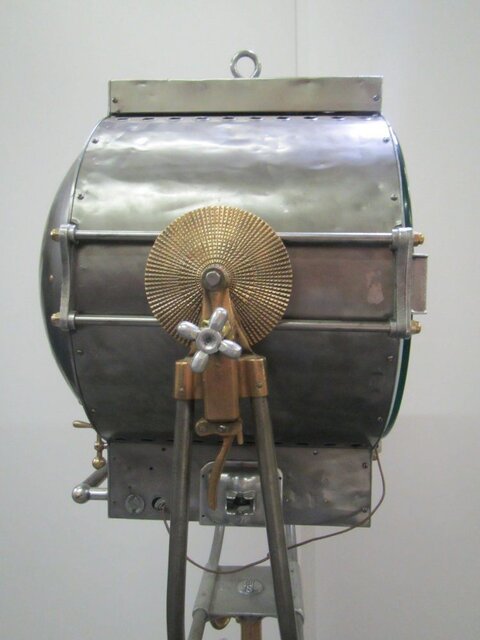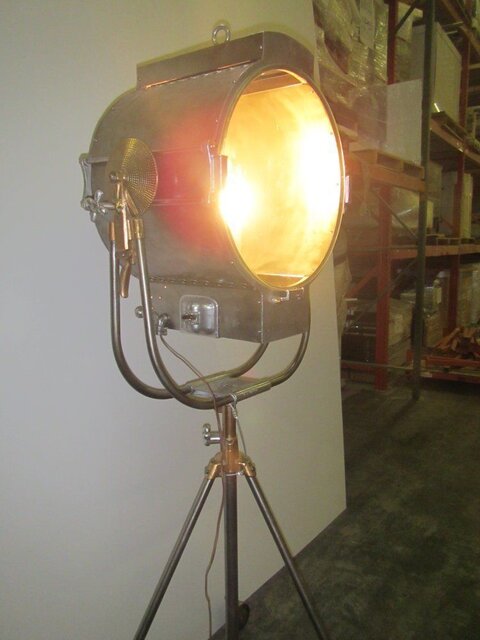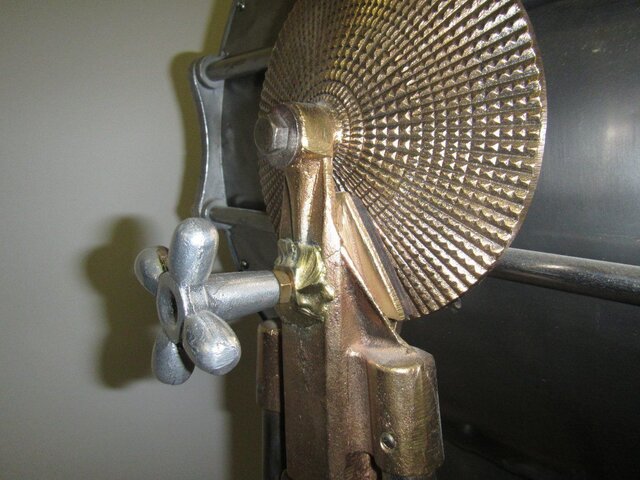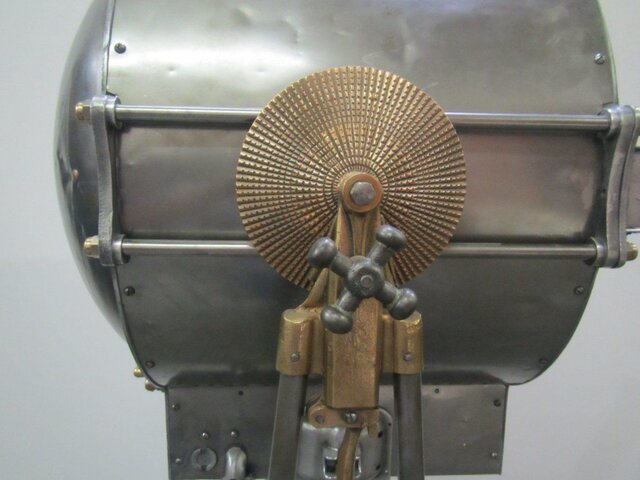Got my Word Perfect upgrade.
Capitol Stage Lighting Company, Started in 1929.
Otto K. Oleson Illuminating Company, Started in the early 1930's
The Capitol
fixture date is about 1929 or early 1930's. What you have for sure is not the 1937 version shown in the catalog. Strange that in 1929 they were using
carbon arc rear castings plus the side access door normally - both only for accessing the
carbon arc rods.. I have lots of other brands of PC that between 1911 and 1929 had already switched to the more classic bottom slide focus. Most brands by than also switched to a rear access door for changing the lamp - made for a much stronger frame. I do have one Chicago Cinema Equipment 5.1/4" PC
fixture with all the above the same, but I also know that it’s from 1911 and right when the nitrogen higher wattage lamp was invented thus converting
carbon arc fixtures into
incandescent ones. Theory I have about your
fixture is Capitol started out their
line of PC fixtures with another brand of light’s used and discontinued castings and molds which was a very common practice in the industry I find up until the 1970's.
Pull the wiring and what ever ?pendant light is inside the
fixture, it adds no value, but is nice the
asbestos has been removed. I know for sure I have a
fixture with the same style of
cord grip but don’t remember which.
Looks like it was once fully painted from your pictures. That paint was removed which possibly doesn’t detract from it’s value too much’ given a "classic industrial age" or "steam punk" buyer, but would for someone wanting it either in original or properly restored condition.
Base even if not all the original parts are there still helps. I don’t own a PC of that brand but do own a [HASHTAG]#1[/HASHTAG]
Olivalitte of the same period and brand (
page 4) and it was fully painted. Paint on mine was in bad enough condition I did have to remove and match the original finish.
Would like if you want to share more about the
fixture three or four more photos. 1) open the door and let’s see inside. 2&3 ) still no photos from the rosette mounting side and what is going on there as far as the odd angle the light is hanging at. 4) a better photo of the hinged side towards the top as a more close up of what type of latch for the door is being shown.
Cool light, again I would recommend not selling it. The amount of money you get off of selling it would only buy a few fixtures of pieces of gear, and in the long run years later you will probably regret having sold it off. This both as a
lobby art piece and for show use as a prop light housing say a color changing
LED fixture. (A few prop lights like this could pay for themselves in a few years in doing shows.) I have even pimped some of this era of
fixture out in the past - fresh paint, shined up bright work, replacement of all fasteners with brass ones, lamp
socket adaptor to medium screw with
socket extender to mount a 400G30/SP lamp or color changing
LED lamp. Osram so far makes the best of them by way of
dimmer/
fade curve and color correctness. Too bad they discontinued the G-30 version (or was that a G-40), because it will have been perfect for this application. Otherwise if you don’t have the antique lamp for it, there is a medium screw G-40 reproduction lamp on the market which has virtually the same
filament as will have originally been used in the
fixture. I would have to check which brand it is, but I do have one. Don’t buy an antique lamp - bought one in the past,
filament broke in transport.
The
Oleson light I would change my date given all of the bronze fittings. I don’t own any fixtures of that brand and this has been polished up so much one wouldn’t be able to tell if it had paint on it. Most likely it did to prevent corrosion and stray light off of it reflectance - was supposed to be a tool not a show piece. Kind of like the chromed Pratt 32's one constantly sees on E-Bay. I would date it to as old as Oleson is confirmed to be - early 1930's
thru say mid-1930's at most. Bronze parts were not much seen as aluminum castings more and more replaced them. I have a 1936 Mole Richardson 2K
Fresnel on stand in
stock that by than was using aluminum castings for just about all parts yours has as bronze.
Interesting
fixture you have, it’s called a "flood light" by the way at least in theater terms - studio/film industry might
call it something else. Flood lights were kind of like Fresnels in the day before Fresnels were invented. They would or wouldn’t have a
reflector just as PC’s did or didn’t (double
image), they were mostly an accessory but one that studio gear like you have will have most likely had - my
Fresnel has one. The Floodlight is kind of like a combination of a wide flood
PAR can (without the oval beam) and a
Fresnel but open faced (no
lens) beam will do w/o
lens. The
Fresnel lens cleaned up the harsh
edge to the beam but it was still soft. The floodlight will have used a
bulb dia. sized PC or
Fresnel like
convex reflector behind it which was probably in a studio gear priced piece a silvered steel
reflector given the price such fixtures went/go for.
Or it could possibly be a form of a large X-Ray
projector dependant on the
reflector. In quick web research tonight I noted something about Oleson having some such light in acting something like a search light. I have a National X-Ray
Reflector Company
X-Ray Projectorfrom 1911 which was famous up until beam projectors were invented (when ever that was). Only main difference between the X-Ray and a
beam projector is that there is no
filament shield (or
lens), no baffles and the X-Ray is slightly longer than a
Fresnel body. Beam projectors are often slightly shorter than a
Fresnel body and have the baffles and
filament shield.
Same concept in
beam projector or even
ACL lamp, National X-Ray’s silvered reflectors were famous in the industry for quality, the term "X-Ray" comes from this light. It made a parallel beam of light. My X-Ray unfortunately was missing it’s
reflector... that’s the most important part in that I have a feeling it’s
reflector was a little more
concave than that of a
spherical reflector on a
Fresnel/PC
fixture.
Given the body length of your Oleson light, my guess is it’s a flood light but two more photos would tell more. First from the rear in seeing what’s going on there, perhaps on the
flat spot even a model number and serial number, than the second and most important - lamp off and from the front. With lamp and without lamp and better yet, anything that’s been installed inside of it. (Can tell by the wiring coming out of it something has been changed in a much less wattage way.)
Value... Again with above, "industrial age" or "steam punk" type of
fixture how it is. Studio fixtures don’t have a lot of vintage value to them unless there is collectors of them which I am sure there is but that would be other forums. Large fixtures take up a lot of square footage in general so they miss out on half the collector market by way of not being able to fit on a
book shelf. On the other
hand, those that have the square footage to display them, also often have the money to pay for them and your Oleson has the pop and bling that might sell. As with the above PC fixtures I once binged out, you would want to ensure now that it is fresh bright work, it doesn’t oxidize and worse yet rust. Replace all fasteners with shiny brass ones, polish up further and
clear coat the exposed parts bronze and steel. At that
point I would do the lamp
socket and its assembly original and as above
socket adaptor and extender them to a vintage modern or color changing
LED lamp. On both if trying to best sell for moderized spit and polished antique, I would go vintage for the wiring. Would have to
ground it in making it safe - not a problem to do and won’t detract from any standard of value. Could do a fuzzy fiberglass sleeved MTW wiring that looks like
asbestos - now braided and into an
Edison plug, but it would look messy and not allow for a
ground. I save that method for
carbon arc spotlights. Better solution is sold by Anixter
Wire & Cable
http://www.anixter.comhttp://www.anxter.com They have a 12/3 cable that’s varnished fiberglass sleeved heat
wire which is about the size of 12/3 SO cable. Looks really vintage old, not very flexible but will work great as reproduction wiring.
The stand on this
fixture is amazing! Wouldn’t mind seeing a closeup of where the
yoke mounts to it and a scroll down to what support arms
etc. are about it’s
base. Fairly certain it’s not a surveyor’s stand as often married to an old lighting
fixture so as to say it’s on a stand. Looks like something that came with the
fixture, but your photos than don’t do it justice. Again will probably have been painted but selling a bright work item has bling and might be worth money. I have a bright brass rolling stand from 1911 (bought a lot of stuff from the same theater), seen on-line the same stand sold for hundreds of dollars. Difference is that mine has patina and was never refinished, plus has it’s casters. I preserved without removing patina what on a stand was bright work instead of exposed it as I would think has been done. Again perhaps not a problem but could hurt it’s antique value for that part of the market.
Ibid... again, don’t sell them. Worth endlessly more to you than you can sell them for.


